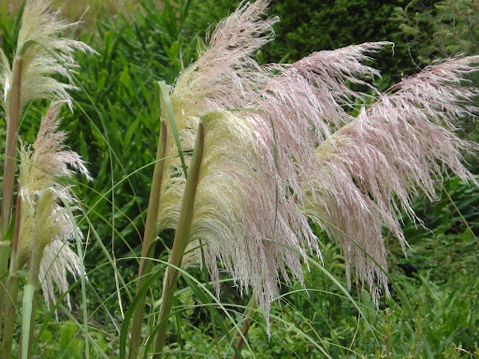Invasive Species
USDA Educates Public on Foreign Plants and Pests

National Invasive Species Awareness Week has passed (it was Feb. 26-Mar. 3). The United States Department of Agriculture’s (USDA) Animal and Plant Health Inspection Service (APHIS) has, however, dedicated the whole month of April to educating the public about the seriousness of invasive species. APHIS is responsible for monitoring new plant and animal pests from outside the U.S. borders. They believe this is needed because, “these hungry pests can have a huge impact on the items we use in everyday life … the fabric in our clothing, the food on our table, the lumber used to build our homes, and the flowers in our garden,” according to Rebecca A. Blue, deputy undersecretary for the USDA’s Marketing and Regulatory Programs.
Nonnative species of pests arrive in many different ways, almost exclusively accidentally. No one means to threaten agricultural crops such as citrus by introducing a new and very deadly sucking insect, but carelessness can do just that. These foreign bugs have no natural predators in this land of plenty, so they proliferate quickly and move through an orchard speedily and then endanger the whole industry in the region.
State agencies also join the effort, and California has one of the most rigorous inspection and quarantine systems in the country. The California Invasive Plant Council (Cal-IPC) is equally committed to educating Californians about the dangers of inadvertent pest introductions.
While insect pests can jeopardize crops, other plants can also become a problem for whole ecosystems. One of the most insidious plant invaders in California is the giant reed (Arundo donax). It colonizes wetlands and chokes out native plant species, alters habitat for native animals, and slurps up gallons and gallons of water that should flow through streams and rivers or percolate back into area aquifers. There are other textbook cases, such as pampas grass (Cortaderia selloana), which was first grown here to provide millions of feathery plumes to the cut-flower industry but escaped to terrorize the coastal bluffs, choking out natives along the way.

The message that these organizations want to impart is that everyone can help to keep invasives out and report those that make it past the borders. Their checklist consists of these points: Buy local, burn local. Yes, insect pests can persist in cut firewood and be transported long distances. Plant carefully—just because a nursery is selling it doesn’t mean that it won’t be harmful if it escapes your garden. Local chaparral is being displaced by European broom (Genista and Cytisus are the main culprits), and it is available from area home-improvement emporiums to this day. Cooperate with all agricultural quarantines, and allow legitimate personnel to inspect for pests. Do not bring or mail fresh fruits and vegetables into the state from anywhere unless they’ve been inspected and cleared. Keep it clean by washing outdoor gear after forays into the outback; even washing outdoor furniture, etc. when moving to another home can help.
Learn to identify pests or diseases that may be new to the area. And lastly, speak up—declare agricultural items when you cross borders and call the USDA with any suspicious sightings.
All this information and much more is available online at various Web sites. Here are two to get started: aphis.usda.gov and Cal-IPC.org.
April Tips
• Plants are bursting with tender new growth, so pests are arriving. Wash off aphids with water and bait for snails with iron phosphate granules (Sluggo is one brand name).
• Start warm-season veggies like tomatoes, peppers, squash, and cucumbers.
• Start warm-season annual flowers like zinnia, petunia, ageratum, cosmos, and marigold.
• Divide cymbidiums after they finish blooming. Pot up clumps of three pseudo-bulbs in orchid bark.
• Go to the Santa Barbara Botanic Garden plant sale all month long.



